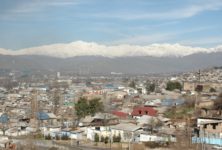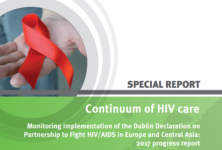High rates of psoriasis, Sjogren’s syndrome, and SLE
Patients living with HIV/AIDS have an increased risk of developing several autoimmune diseases, a nationwide Taiwanese study suggested.
Compared with the general population, the HIV/AIDS group had standardized incidence rates of 1.64 (95% CI 1.24 to 2.13) for Sjogren’s syndrome, 2.05 (95% CI 1.67 to 2.48) for psoriasis, and 2.59 (95% CI 1.53 to 4.09) for systemic lupus erythematosus (SLE), according to Yi-Ming Arthur Chen, MD, of Kaohsiung Medical University, and colleagues.
n addition, the standardized incidence rates were higher, at 35.06 (95% CI 23.1 to 51.02) for autoimmune hemolytic anemia and 2.50 (95% CI 2.05 to 3.02) for uveitis, but lower, at 0.70 (95% CI 0.48 to 0.99) for ankylosing spondyloarthritis, the researchers reported online in Annals of the Rheumatic Diseases.
The widespread implementation of highly active antiretroviral therapy (HAART) for HIV/AIDS has resulted in patients living longer, and consequently developing more comorbidities — including autoimmune diseases.
There are also specific reasons why autoimmune diseases can complicate HIV/AIDS.
“When HIV infects a host, it may induce production of autoantibodies due to the structural antigen similarity between viral proteins and self-antigens. The molecular mimicry between HIV protein and self-antigens could cause antibody cross-reactions and lead to development of autoimmune disease,” Chen and colleagues explained.
HIV also disturbs the normal balance of T cells, which can further contribute, they noted.
Nonetheless, the rates of autoimmune disease among these patients have not been determined, nor has the potential influence of HAART.
Therefore, the researchers analyzed data from the National Health Insurance Research Database of Taiwan, which includes health statistics for almost 24 million individuals.
From the database, they identified 20,444 patients, ages 15 and older, who had been diagnosed with HIV from 2000 to 2012. Mean age was 30, 92% were men, and 67% had been given HAART.
For systemic autoimmune diseases, the highest incidence densities were seen for psoriasis, at 101.77/100,000 person-years, Sjogren’s syndrome, with 56.09/100,000, and rheumatoid arthritis (RA), at 56.18/100,000.
For the organ-specific autoimmune diseases, the highest incidence density was seen for uveitis, with 104.37/100,000, followed by inflammatory bowel disease, with 92.24/100,000, and autoimmune hemolytic anemia, at 26.42/100,000.
The researchers also calculated the standardized incidence rates according to sex, and found that compared with the general population, men had higher risks of psoriasis (SIR 2.09, 95% CI 1.70 to 2.55), uveitis (SIR 2.51, 95% CI 2.04 to 3.06), and hemolytic anemia (SIR 36.07, 95% CI 22.59 to 54.61).
In contrast, women had higher risks of Sjogren’s syndrome (SIR 2.29, 95% CI 1.48 to 3.38), uveitis (SIR 2.37, 95% CI 1.08 to 4.50), lupus (SIR 3.50, 95% CI 1.67 to 6.43), and hemolytic anemia (SIR 31.25, 95% CI 10.07 to 72.93).
They then analyzed the rates with regard to whether or not patients were receiving HAART. For those on the therapy, the highest incidence densities were for uveitis (132.95/100,000), psoriasis (97.32/100,000), and inflammatory bowel disease (83.68/100,000). For those not on the therapy, the highest incidence densities were for Sjogren’s syndrome (117.42/100,000) and inflammatory bowel disease (113.33/100,000).
Compared with the general population, individuals receiving HAART had elevated risks for psoriasis (SIR 1.95, 95% CI 1.52 to 2.47), uveitis (SIR 3.21, 95% CI 2.60 to 3.92), and hemolytic anemia (SIR 45.10, 95% CI 28.58 to 67.67), but decreased risks for RA (SIR 0.66, 95% CI 0.43 to 0.95) and ankylosing spondyloarthritis (SIR 0.64, 95% CI 0.40 to 0.98).
For those not on HAART, risks were higher for multiple autoimmune diseases:
- RA: SIR 1.52 (95% CI 1.02 to 2.16)
- Psoriasis: SIR 1.95 (95% CI 1.57 to 3.21)
- Sjogren’s syndrome: SIR 2.91 (95% CI 2.01 to 4.06)
- Hashimoto’s thyroiditis: SIR 4.17 (95% CI 1.79 to 8.21)
- Polymyositis: SIR 5.15 (95% CI 1.66 to 12.03)
- SLE: SIR 5.81 (95% CI 3.17 to 9.75)
- Scleroderma: SIR 7.89 (95% CI 1.59 to 23.07)
- Autoimmune hemolytic anemia: SIR 14.81 (95% CI 3.99 to 37.93)
As to why certain autoimmune diseases would be more common among patients with HIV/AIDS, the researchers noted that HIV proteins have been detected in macrophages within salivary glands, which could lead to damage in the glands and Sjogren’s syndrome.
For psoriasis, contributory factors might include the decrease in CD4 suppressor T cells, leading to upregulation of proinflammatory pathways, the increase in CD8 memory T cells, which can increase interferon production, and the presence of HIV superantigens that could recognize cutaneous autoantigens.
Additionally, molecular mimicry between HIV proteins and self-antigen might promote autoantibody production and trigger SLE.
“The population of patients living with HIV/AIDS is growing older, and clinicians thus need to be aware of their higher risks of autoimmune diseases,” Chen and colleagues concluded.
Limitations of the study included its reliance on administrative claims data and its inclusion of only Taiwanese individuals.
The study was funded by Kaohsiung Medical University.
Chen and co-authors disclosed no relevant relationships with industry.
Primary Source
Annals of the Rheumatic Diseases
Source Reference: Yen Y-F, et al “Incidence of autoimmune diseases in a nationwide HIV/AIDS patient cohort in Taiwan, 2000-2012” Ann Rheum Dis 2016; DOI: 10.1136/annrheumdis-2016-209815.


 ПОИСК ПО САЙТУ
ПОИСК ПО САЙТУ  поиск по ресурсному центру
поиск по ресурсному центру 


